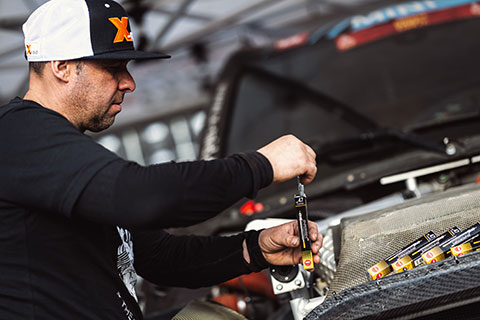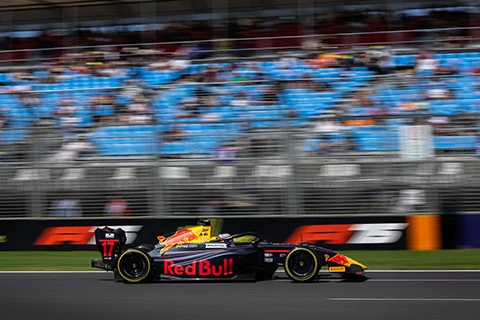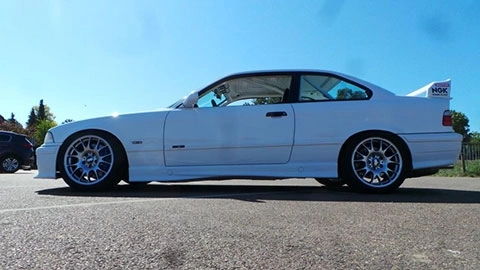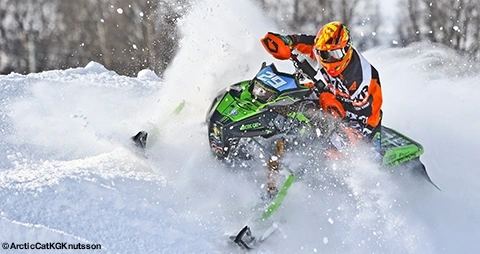Behind the scenes at the x-raid rally team

X-raid most recently competed at the world famous Dakar Rally – for the second year in-a-row with NGK SPARK PLUG as its technical partner and sponsor. To shed some light on the preparation involved in participating at such an event, we caught up with X-raid’s Tobias Quandt, who revealed what it takes for a team to perform at the highest level.
Preparing for Dakar
While ‘the Dakar’ is internationally recognised as one of the world’s most testing endurance rallies for drivers, the logistics involved in reaching the event is a battle within itself. For the iconic race that usually begins at the turn of the year, proper preparation is key. “The planning starts already in July and the preparation starts at the beginning of October each year,” informs Tobias. “The ASO (the organiser of the Dakar Rally) charters a ship for all the European teams which departs from Marseilles at the end of November. This means everything has to be ready by mid-November or else it will have to be flown which is naturally a lot more expensive,” he tells.
For this year’s Dakar, the X-raid team transported a mammoth six 6x6, two kitchen trucks, one expandable truck, seven camper vans and service cars. The most precious cargo for a team competing at the Dakar Rally, however, is spare parts and tyres. “Experience is the key factor here because you never know which part types will be the most vital, which means a lot of guess work has to be done,” he says. With space at a premium and a lot of parts to be transported, the team uses colour coding in order to avoid any unnecessary confusion. “Each part of the car, such as the brakes, cooling system components, electrics etc. is placed in a box with a specially assigned colour. This means that parts can be found much faster.”
Along with experience, the ability to improvise is also of utmost importance because no matter how perfect the planning has been, the unexpected is always lurking behind each corner. “At other certain rallies in the past, we have had equipment stolen while in transit and it can also get delayed but things like this have never caused any real problems.”

The vital role of the team mechanics
For the technical backroom staff, the Dakar Rally is also the pinnacle in terms of endurance. Throughout the event, the mechanics must use all their knowledge and improvisational skills to get the vehicle in its best working order, all while battling exhaustion caused by a minimal amount of sleep in uncomfortable conditions.
“Our mechanics must begin their day between 4am-6am, when they go straight to work on the cars. Only after the racers have set off do they get a chance to have breakfast,” tells Tobias. The day then involves building up the X-raid service park (camp) and doing preparatory work for the vehicles before they return. “Each mechanic uses any downtime opportunity to eat and catch up on sleep in their bivouac because they know that when the vehicles return, they will often have to stay up late into the night to perform check-ups and repairs as well as sometimes having to change the car’s set-up.”
According to Tobias, their collaboration with the drivers is of particular importance given the unpredictable nature of the terrain in this form of racing. “In circuit racing, you always have the same track which means that computer data and timing take precedence. In offroad racing, however, the ground changes, so the feelings and the feedback the drivers provide to the mechanics is vital.”
The future
At the 2023 Dakar Rally, X-raid was unable to match the lofty heights reached in previous years, with Sebastian Halpern and Bernardo ‘Ronnie’ Graue overcoming many challenges to secure ninth overall in their MINI JCW Rally Plus. Sheikh Khalid Al-Qassimi and Ola Floene finished in 16th place in their MINI JCW Buggy, with Jakub ‘Kuba’ Przygonski and Armand Monleon directly behind them in 17th position in their MINI JCW Rally Plus. Denis Krotov and Konstantin Zhiltsov finished 21st in their MINI JCW Buggy.
For Tobias, however, the outlook remains overwhelmingly positive. “The first week did not go well for us and the overall results could have been better, but we saw the great potential of our cars and we know we will be stronger in the future.” To ensure this, the team will continue to rely on the vast experience and expertise of the world’s leading ignition and sensor specialist. “NGK SPARK PLUG’s ignition technology has been a great addition to X-raid. The company has achieved it all at the highest levels of motorsport and we are confident that, going forward, they will play a significant role in our future success.”








